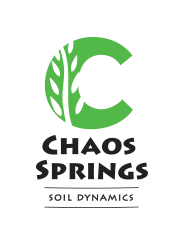Protozoa's Powerful Influence, They Will Make Your Soil Sing!
/Protozoa are single-celled organisms that feed primarily on bacteria. They also eat other protozoa, soluble organic matter and sometimes fungi. They are important drivers of nutrient cycling as they release nutrients when they consume other organisms.
Protozoa are larger than bacteria – ranging from 1/5000 to 1/50 of an inch (5 to 500 µm) in diameter. As they eat bacteria, protozoa release excess nitrogen that can then be used by plants and other members of the food web, this is known as nutrient cycling.
Understanding C/N ratios is one way to understand how nutrient cycling works.
Here is a simple example to think about:
Bacteria have a C/N ratio of 5 to 1. This means they have 5 carbon and 1 nitrogen.
Protozoa have a C/N ration of 30 to 1 which gives them 30 carbons and 1 nitrogen.
For a protozoa to get the carbon nutrient it needs it will have to eat 6 bacteria.
But then it also gets 6 nitrogen, and it only needs 1.
So, it spits out the 5 extra nitrogen which is in a form available to plants and the plant eats it up.
Each protozoa consume about 10,000 bacteria per day! This is important in making nitrogen available for plants. Nitrogen from protozoa is excreted in the form of ammonium, this is a better form for the uptake of nitrogen by plants. Ammonium also doesn’t leach from the soil as easily as nitrates do.
This is a very simplistic example of how nutrient cycling works on a biological level, but you get the idea (I hope).
Protozoa are classified into three groups based on their shape:
Ciliates are the largest and move by means of hair-like cilia. They eat the other two types of protozoa, as well as bacteria.
Amoebae can also be quite large and move by means of a temporary foot or “pseudopod”.
Flagellates are the smallest of the protozoa and use a few whiplike flagella to move.
If you look at a sample of compost tea, or better yet hay tea, you can see the different protozoa swimming around. Hay tea is a simple way to get protozoa into your garden or farming system and release the abundance of nitrogen in the bacteria.
Making Protozoa Tea - A Basic Recipe
Fill a vessel with non-chlorinated water, you can use any size vessel from 20 litres to 1000 litres.
Add hay, straw or lucerne at about 20 to 30% of the volume of the container, chopping or mulching will speed the process. You can use dried or fresh. (do not use product that has been sprayed with pesticides this will kill the protozoa).
You can put the hay in a bag with a rope and place it in the tank with water or just put it straight into the vessel.
Some people like to add molasses which will feed beneficial bacteria.
Some recipes like to add fish as this will feed beneficial fungi.
You can fit the tank with an aerator to aerate the mixture in the tank if you like, but we have found this to be unnecessary and simply stirring it each day helps keep it aerobic. If you leave it too long, an imbalance of microbes could occur. If you smell any foul odours from the mixture, then it has been left too long and needs to be thrown out because an imbalance of bacteria has occurred.
The mixture will be ready in two or three days up to a week in cooler temperatures. It should be used within a few days and before any anerobic smells occur.
The tea can be diluted at a ratio of 1:10 with water before applying. The mixture can be sprayed directly to the soil with a sprayer (our Cyclone Multi-Task Sprayers are perfect for the job) or for gardens you can use a watering can. Spraying directly onto the soil will have the best, longest lasting effect, but do whichever is easiest for you.
Repeat the process and apply one or two times a week for a few weeks to see the best results.
Have fun with this simple technique and see what results you can get. Let us know.




